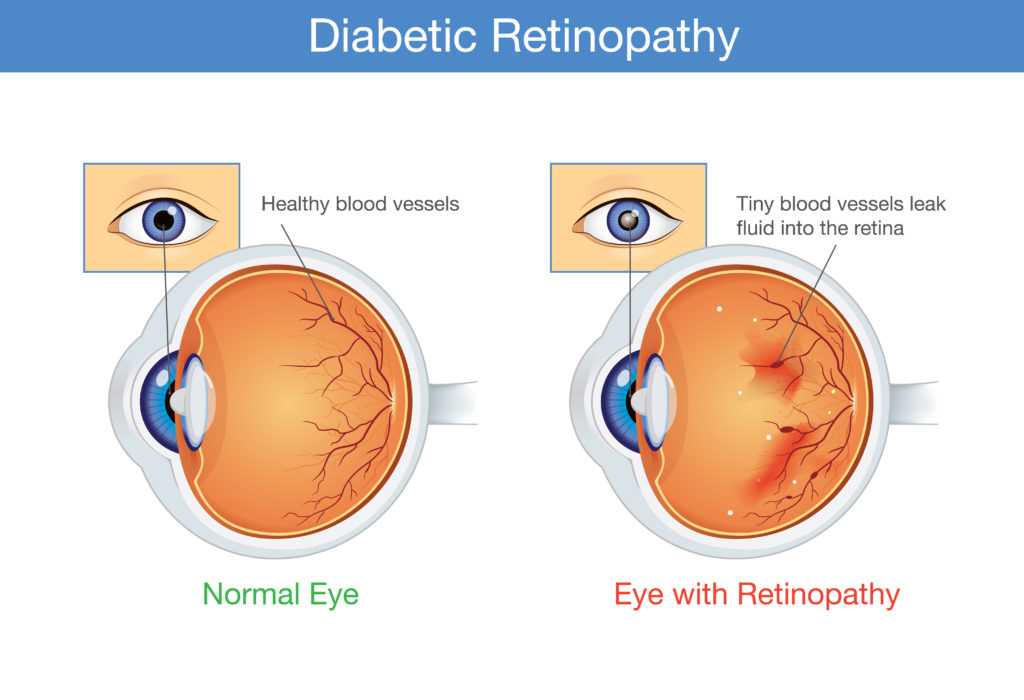Frequently Asked Questions About Diabetic Retinopathy
Submitted by Elman Retina Group on November 17, 2019
 Diabetic retinopathy is a serious medical condition that can lead to loss of vision. At Elman Retina Group, we receive many questions about the causes, symptoms, and treatments for this eye disease. In this post, our team answers some frequently asked questions about diabetic retinopathy.
Diabetic retinopathy is a serious medical condition that can lead to loss of vision. At Elman Retina Group, we receive many questions about the causes, symptoms, and treatments for this eye disease. In this post, our team answers some frequently asked questions about diabetic retinopathy.
What Causes Diabetic Retinopathy?
Diabetic retinopathy is caused by damage to the retinal blood vessels. People with either type 1 or type 2 diabetes are at risk for diabetic retinopathy.
Uncontrolled blood sugar can lead to increased damage to the retinal blood vessels. However, even people with well-controlled blood sugar can develop diabetic retinopathy.
You may be at a higher risk for diabetic retinopathy if:
- You’ve had diabetes for many years
- You are Hispanic or African-American
- You have other medical conditions
- You are pregnant
What Are Symptoms of Diabetic Retinopathy?
Vision fluctuations, blurred vision, poor night vision, and seeing spots or floaters are all symptoms of diabetic retinopathy. You should see an ophthalmologist immediately if you experience any of these symptoms.
If you have diabetes, we recommend getting a dilated eye exam at least once a year to look for signs of diabetic retinopathy or other vision problems, even if you aren’t currently experiencing any symptoms. If you are diabetic and are considering getting pregnant, you should get an eye exam as well before pregnancy.
How Is Diabetic Retinopathy Treated?
Your treatment will depend on the severity of your diabetic retinopathy and other factors. If you have only minor damage to your blood vessels, your doctor may recommend regularly monitoring and managing your diabetes through diet and exercise. Early detection is often the best way of protecting your eyes from serious damage.
If your diabetic retinopathy is more advanced, a laser procedure may be recommended. This procedure uses photocoagulation to seal leaking blood vessels and prevent further tissue damage.
Other cases may require an intraocular surgery called a vitrectomy. This procedure involves the removal of the vitreous, a gel-like fluid inside the eye. Saline liquid, or a gas or silicone oil bubble, will be used to replace this fluid and stabilize pressure in the eye.
There is currently no simple “quick fix” cure for diabetic retinopathy, but there are several ways to prevent a worsening of your symptoms and protect your vision. Contact our retina specialists if you have further questions about the diagnosis and treatment of diabetic retinopathy or if you are experiencing any symptoms.
Schedule an appointment at Elman Retina Group to discuss your concerns about diabetic retinopathy with one of our retina specialists.



